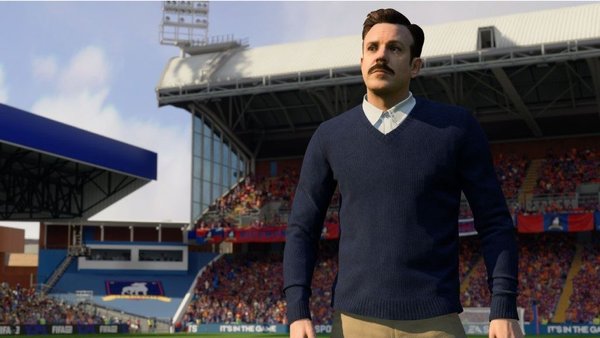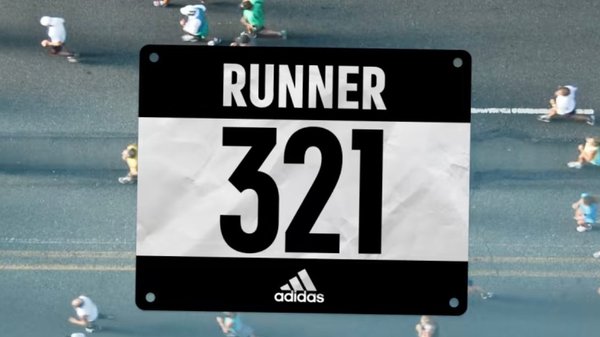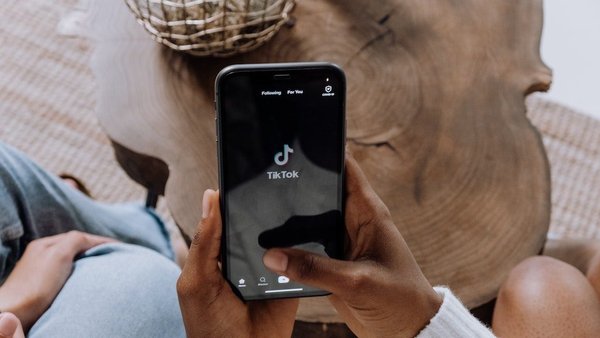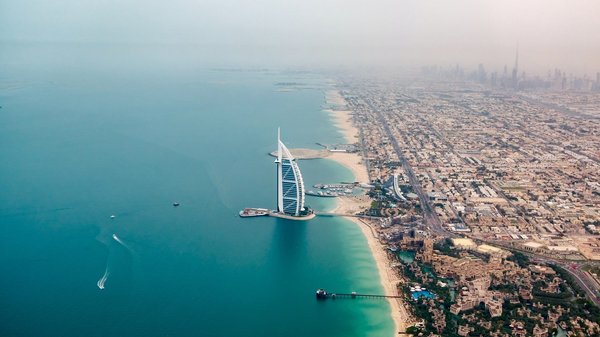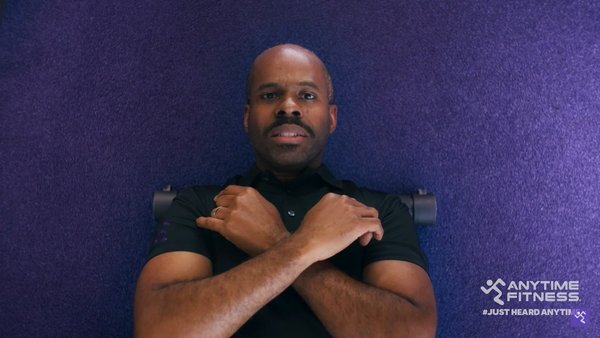Cannes Contenders 2023 /
Contagious’ writers and editors predict which campaigns will bring home the Grands Prix from Cannes
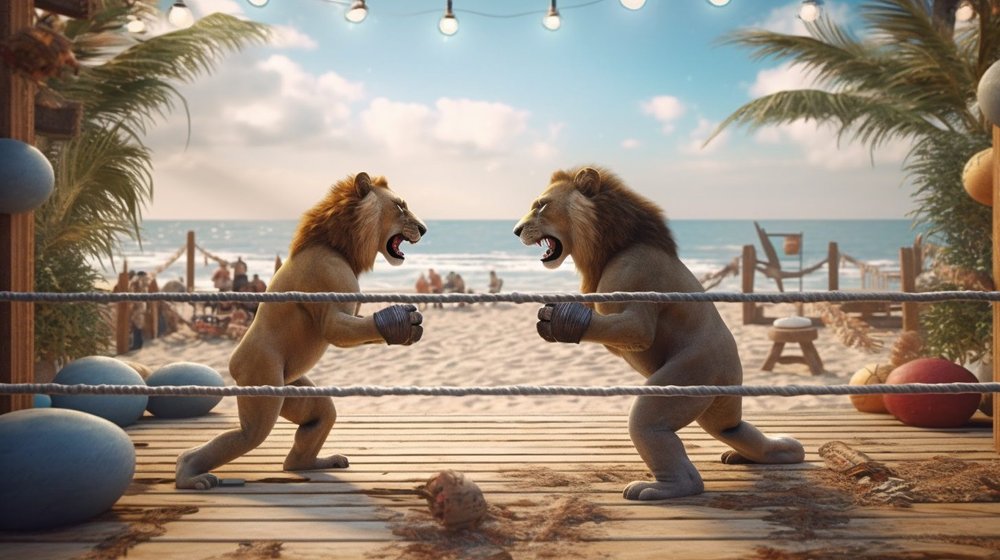
In a few weeks approximately 15,000 members of the global advertising industry will decamp to the south of France for the Cannes Lions International Festival of Creativity.
Ahead of the most prestigious and influential awards show in the advertising calendar, we’ve put together a list of the campaigns that we think will – or in some cases, should – take home the big prizes from the Palais.
Mammoth Meatball / Vow / By Wunderman Thompson, Benelux /
I have never seen a woolly mammoth and thought it looked particularly delicious. In fact, prehistoric meat doesn’t sound all that appetising, but it certainly is attention-grabbing. And that’s why Australian cultured meat startup Vow decided to turn the mammoth into a meatball. This audacious PR campaign pushes the boundaries of what is scientifically possible, exactly the type of limit-testing creativity that deserves to be celebrated at Cannes.
To cook up the meatball, scientists recreated the DNA of the extinct creature, filling any gaps with fragments of DNA from the African elephant. This proved how Vow’s products (grown from the cells of animals) are wildly different from plant-based meat alternatives like Impossible or Beyond Meat (a common misconception). While people couldn’t sample the Mammoth Meatball (for fear of uh, death), it acted as a product demo by concretising a complex scientific process.
‘Very few consumers know what cultured meat actually is,’ said James Ryall, Vow’s chief scientific officer. ‘Getting a story about cultured meat into mainstream media is difficult, so we knew we needed to do something outrageous.’
According to the agency, it worked. The story was picked up by 3,400 outlets, allowing Vow’s rallying cry, ‘Let’s eat ourselves out of extinction’, to echo across the world.
By Chloe Markowicz, editor
Bavaria Brewery / Crops of Hope / By MullenLowe SSP3, Bogotá /
There are more definitions of creativity than there are pairs of white linen trousers on the Croisette, but there are only really two kinds. One is the kind of creativity that produces stories and paintings out of pure imagination, and the other is the kind that combines old things in new ways, which can also be called innovation.
Back when advertising was a second-tier glamour industry focused on films and posters, it mostly celebrated the former. But now the industry has reinvented itself around technology and doing good, it is the latter that wins awards. And Crops of Hope is practically the platonic ideal of that innovative kind of creativity.
Farmers in northern Colombia were struggling to make ends meet during the pandemic and so AB Inbev’s Bavaria Brewery created a new beer made with cassava, which grows well there, and then paid the farmers to supply the crops.
It’s precisely the kind of one-plus-one-equals-three thinking that juries at Cannes go wild for, and rightly so. Crops of Hope gave local farmers a steady income at a difficult time and the beer they produced, Nativa, became the second-biggest seller in the region after three months. If it doesn’t win in June, I’ll eat my white linen trousers.
By James Swift, online editor
Samsung / Flipvertising / By CHEP Network, Sydney /
From Fellini’s 1963 classic, 8½, to Tarantino’s Once Upon a Time in Hollywood, the movie industry loves awarding prizes to movies about movies. So, it follows that the Oscars of the ad industry is likely to look favourably on an artful campaign that made targeted advertising an extremely attractive proposition.
Sparked by the insight that Gen Z (its primary target) are not huge fans of social media algorithms and tend to regard personalised ads as an invasion of privacy, Samsung’s fiendishly clever Flipvertising mechanic encouraged this suspicious cohort to figure out how to get themselves targeted by specific YouTube ads for a chance to win a Galaxy Z Flip 4. Rather than extol the product benefits in the usual marketing manner, the brand’s online scavenger hunt (and subsequent retargeting pools) drove consideration through a journey of unbiased reviews, unboxings, tech breakdowns, comparisons and various other slices of content that Samsung didn’t have to pay for.
The conceit takes re-targeting to the next level, reframing the value of algorithms to Gen Zers, not as a sinister form of stalking but instead as a fun tool for opt-in engagement. Samsung’s audacious flipping of the script led to 600% higher engagement than the industry average, and a 34% sales increase.
Cannes juries: certainly one for your consideration.
By Paul Kemp-Robertson, co-founder & chief brand officer
Skinny / Phone It In / By Colenso BBDO, Auckland /
Kiwi telco Skinny has a history of producing irreverent and effective advertising, with the no-frills network previously leveraging budget big-names as well as the timeless power of peer review to dial-up its message.
The brand’s latest effort follows in the same groove, with Skinny yet again recruiting ordinary New Zealanders to vouch for its thrifty services. The company’s ‘Phone It In’ campaign played on the notion that it is prepared to go to extraordinary lengths just to keep costs down – on this occasion by crowd-sourcing the voice-over talent for its radio ads.
The beauty of this idea lies in the interplay between a series of interactive OOH executions and the compellingly cut-price content they ultimately generated. Aside from offering us a ‘media as message’ masterclass, Skinny’s tongue-in-cheek approach really drove results, with the brand reporting a 34% increase in network sign-ups. ‘Phone It In’ has already bagged two Grands Prix at the Spikes Asia Awards – expect Radio & Audio jurors in Cannes to also answer the call.
By David Beresford, senior strategist
Time to Read / Kinokuniya / By Saatchi & Saatchi ME, Dubai /
Marketers are forever being diverted by the latest fad, whether it’s NFTs, Web 3 or AI. The Time To Read campaign deserves to win big at Cannes because it’s a reminder of the power of a good old-fashioned idea.
Kinokuniya is the UAE’s largest bookseller and its sales were declining year on year because people weren’t reading as much.
Saatchi & Saatchi’s solution was to point out to people that their preferred excuse not to read – a lack of time – was just that: an excuse.
The agency took data on how much time people in the region on average spent on Instagram, Facebook and TikTok, and then created ads that showed them how many books they’d get through in a year if they spent that time reading instead of scrolling.
The campaign helped Kinokuniya boost sales by 28%, and it has already won Grands Prix in Creative Strategy and Media at the Dubai Lynx Awards 2023. And as a reminder that creativity also lives outside of hot trends, it deserves to be in Cannes judges’ good books, too.
By Manon Royet, researcher
Pepsi / LoL Food / By Sancho BBDO, Bogotá /
When someone asks me how to make a good gaming campaign I say look no further than LoL Food. In fact, I would go as far to say that Pepsi’s campaign in Latin America during the 2022 League of Legends world final is a shoo-in for a couple of awards in the newly created Entertainment for Gaming category at Cannes.
Rather than try to force itself into the virtual world, Pepsi brought League of Legends to life by taking two characters from the game who had fast food-themed skins and creating delivery restaurants for them – pizza for ‘Pizzavir’ and fried chicken for ‘Kikiri Galio’. Gamers could then order this food (which included a Pepsi) through a delivery app. And the whole stunt was promoted in-game and with supporting OOH.
It's deceptively simple, but demonstrates how well Pepsi understands gamers and how, when trying to target gamers, you don’t need to be in the game itself. With a 120% increase in Pepsi sales on delivery platforms, the campaign proves that bringing the game to life in the physical world is just as impactful.
By James Barry, associate strategist
Corona / Corona Extra Lime / By DraftLine, Shanghai /
It takes two to make a thing go right and everyone knows that Corona and limes go together like fried food and heartburn. So when lime imports to China were disrupted by Covid, the AB InBev-owned beer brand partnered with local authorities to identify low-income areas in Sichuan Province where local farmers could be trained to grow limes.
Corona then sold the extra limes alongside its beers and donated the profits from the limes back to the farmers. In one year, a whopping 1 million extra limes were harvested, boosting the lime farmers’ per capita income by 21%. The campaign also racked up a respectable 943 million impressions.
It’s this kind of fresh thinking that will catch the attention of juries at Cannes this year – as supply-chains issues are expected to continue throughout 2023, we need more creative responses to logistical issues, where brands turn problems into brand-building opportunities and sales results.
What’s more, this initiative speaks to a tenet of Corona’s identity – popping a lime wedge in a Corona bottleneck is an established ritual that makes the brand distinctive. Cannes might be synonymous with rosé, but Corona has earned a place at the table this year.
By Phoebe O’Connell, writer/analyst
Suncorp / Resilience Road / By Leo Burnett Australia /
After scooping last year’s Grand Prix for Innovation at Cannes for its One House to Save Many project, Suncorp was faced with the advertising equivalent of second album syndrome. The Australian insurance firm could either up the creative ante and produce a belter like Oasis’ (What’s the Story) Morning Glory, or rest on its laurels and turn out a damp squib like The Stone Roses’ Second Coming.
Fortunately, Suncorp and its agency, Leo Burnett, hit on a winner. Yes, Resilience Road may sound like a 90s soap opera, but it represents a long-term strategic shift for the brand. One House to Save Many was a blueprint for future Australian homes, designed to withstand the country’s extreme weather – inspired by the insight that 97% of disaster funding is spent on repairing/rebuilding, and only 3% on prevention/resilience. The campaign’s second phase applied design principles and learnings from the One House prototype to upgrade real homes in Queensland on a road vulnerable to destructive weather events. The street was renamed Resilience Road and the project was captured in a documentary featuring residents sharing their experiences of climate change. Suncorp also offered video tutorials, as well as creating industry-first insurance products that incentivise resilience – a leadership position that resulted in a quote uplift of 26%.
Some might say that’s a sustainable brand platform.
By Paul Kemp-Robertson, co-founder & chief brand officer
Partners Life / The Last Performance / By Special, New Zealand /
Truth be told, the ads produced as part of The Last Performance campaign are not exactly triumphs of craft or wit. But the creative strategy and media planning behind the campaign is exceptional.
The ads for New Zealand insurer Partners Life ran during episodes of The Brokenwood Mysteries, which is like Midsomer Murders in that some poor soul gets bumped off every episode.
The ads aired after the show had finished but before the credits had rolled, which by itself was a good way to ensure better-than-average attention levels.
But the real stroke of genius was getting the actors who portrayed the show’s murder victims to resurrect their roles for the benefit of the brand, coming back to life on the table of the morgue to talk about how they wished they’d insured themselves when they still had the chance.
Some jury members might bristle at the unorthodox media placement (a few viewers in New Zealand complained to the regulator that the campaign was misleading). But there’s no denying that The Last Performance offers an object lesson in the power of context to make a brand’s message memorable.
By James Swift, online editor
Budweiser / Bringing Home the Bud / By Wieden & Kennedy, New York /
Would anyone remember Budweiser’s $75m sponsorship of the 2022 World Cup if host nation Qatar hadn’t banned the sale of alcohol in stadiums a generous 48 hours before the whole show kicked off?
Think about that for a sec. Suddenly everyone is watching: what would you do?
I’d give a Gold Lion at least to Bud’s social team for, ‘Well, this is awkward…’, a short-lived but pivotal tweet that immediately changed the mood. But another four words, Bring Home the Bud, quickly took centre-stage as Wieden+Kennedy’s genuinely game-changing response.
Football fans love an underdog – they love victory snatched from the jaws of defeat, and they love free beer. #BringHomeTheBud gave them all three. They made it look like the most high-stakes logistical challenge since the Marshall Plan. Their network of agencies turned on a dime to make it happen.
There’s an old insurance tagline: ‘We won’t make a drama out of a crisis’. How British.
Instead of calling in the lawyers, this campaign parlayed an idealogical nightmare into a star-spangled drama, cast a banned product as the hero, and put it at the heart of the action until the last ball was kicked – and beyond.
That’s how you go from Bud Zeros in Qatar to Bud heroes on the world stage. And that’s why Budweiser should bring home the PR Grand Prix.
By Katrina Stirton Dodd, editor at large
Apple / The Greatest / In house /
I’ll come right out and say it: I’m backing a product demo to smash it at Cannes this year.
It’s not innovative, like the S(c)ent by Glade product demo was, or ambitious like Renault’s Village Electrique.
In fact, there’s nothing flashy or PR-worthy about it. Which makes my pick simultaneously the least ‘Cannes’ thing but also The Greatest.
The product demo in question is a two-minute film from Apple showing people with disabilities using the brand’s technology, posted to YouTube in November 2022 with closed captions as well as audio descriptions.
This type of work usually passes under the radar. It’s ‘hard working’ and therefore deemed lacking in creative or emotive potential.
Screw that and anyone who thinks it. This is a product demo for a product most people are already abundantly familiar with, but the spot counters that overfamiliarity by getting us to see the product with new eyes. What. A. Coup.
The film was shot by Kim Gehrig, the directorial divinity behind Bodyform’s Viva La Vulva, Sport England’s This Girl Can and Nike’s Dream Crazier, and you can tell. Like her previous output, it is superb.
There has been thought, care and craft put into the project and that commitment to excellence deserves the highest recognition.
By Becca Peel, senior strategist
McDonald’s / Raise Your Arches / By Leo Burnett, London /
McDonald’s UK’s 60-second film about an office worker who mobilises her entire office on a lunchtime expedition to the Golden Arches is a feast for the senses.
But the best thing about it is how it manages to be an unmistakable McDonald’s ad without showing the brand’s food, restaurants or its usual visual assets – that feat alone makes it a contender in the Film and Craft categories at Cannes.
But the campaign has also been entered into the Creative Strategy sub-category for ‘audience insights’, and it has a good chance of success given that there’s two insights lurking behind the creative.
The first insight was that the suggestion of a McDonald’s is often more meaningful than the food itself, while the second insight was that invitations to scoff a Mickey D’s are often made without words – such as with a nod, an emoji, or in this case, a suggestive raise of the eyebrows.
The universal nature of these insights has led to the UK campaign being adopted by McDonald’s in more than 35 countries, and the film has already been watched 162 million times online since it was released in January.
We’re expecting this to raise more than a few eyebrows at Cannes this year. ^^
Sunil Bajaj, writer / analyst
Want to learn more about the Cannes Contenders? /
Our Walk the Work presentations during Cannes offer a lively and topical guide to the exceptional work that’s either due to win or just won at the International Festival of Creativity.
In these sessions, Contagious’ experts explain the unique strategies behind the best campaigns. They also explore some the key themes and trends that are emerging from the festival, and share their perspectives on the best ways implement them in your day-to-day work.
We can present Walk the Work to you and your team at Cannes, in your space or at our Villa, which is near the Palais. And if you are not in Cannes, our experts can also bring the festival to your office with a virtual presentation.
Learn more or book your session by contacting [email protected].
Want more of the same? /
We don’t just write about best-in-class campaigns, interviews and trends. Our Members also receive access to briefings, online training, webinars, live events and much more.

